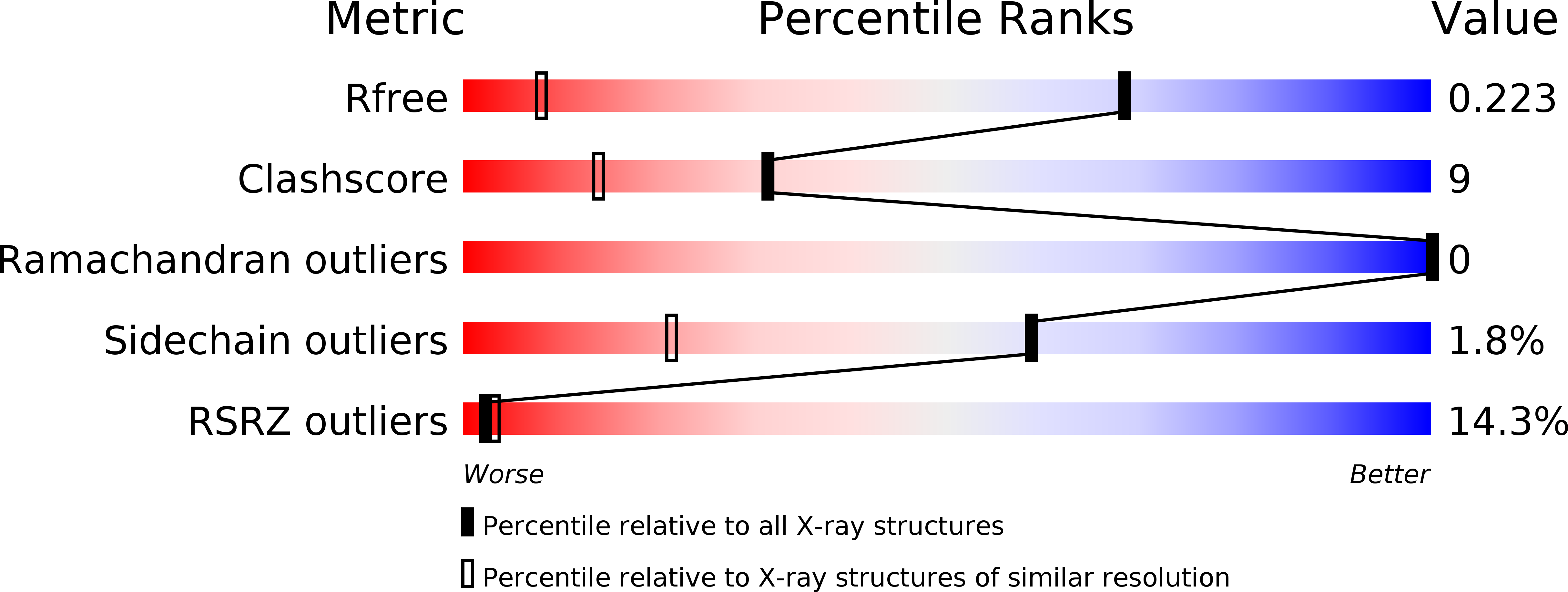
Deposition Date
2005-10-17
Release Date
2006-02-14
Last Version Date
2023-08-23
Entry Detail
PDB ID:
2BBR
Keywords:
Title:
Crystal Structure of MC159 Reveals Molecular Mechanism of DISC Assembly and vFLIP Inhibition
Biological Source:
Source Organism:
Molluscum contagiosum virus subtype 1 (Taxon ID: 10280)
Host Organism:
Method Details:
Experimental Method:
Resolution:
1.20 Å
R-Value Free:
0.22
R-Value Work:
0.21
R-Value Observed:
0.21
Space Group:
P 21 21 21


